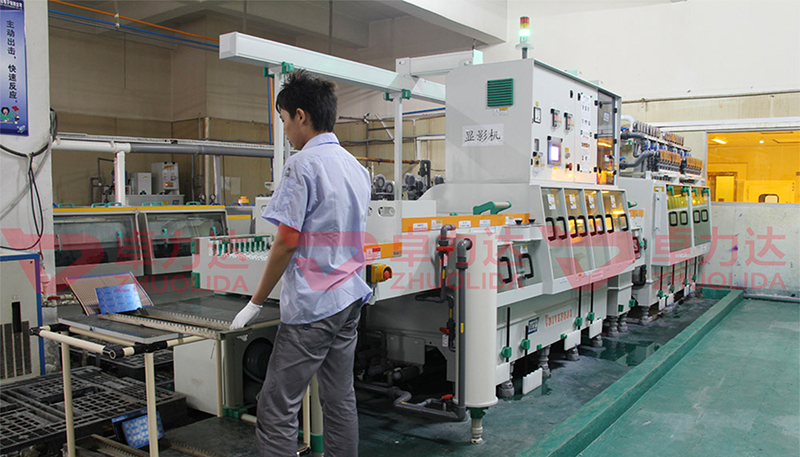
Color etching on stainless steel is a fascinating process that combines chemistry, artistry, and engineering to create durable, visually compelling surfaces with intricate designs and vibrant colors. This method is widely used in various industries, from signage and decorative panels to consumer products and fine art, because it enhances stainless steel's inherent aesthetic appeal while preserving its resistance to corrosion and wear.
Etching is a surface treatment that involves selectively removing material to create patterns or textures. For stainless steel, etching is often done with chemical solutions that react with the metal’s surface. Traditional etching on stainless steel produces a monochromatic result, but color etching allows for the application of different hues. This can be achieved by adding special chemical processes, heat treatments, or by anodizing the steel.
The process begins by covering the stainless steel with a protective layer, often a photoresist material that shields specific areas. A design template is applied, allowing only the unprotected parts of the steel to be etched. Once exposed to an acid or a similar etching agent, the uncovered sections of the stainless steel react, creating precise, controlled indentations. The depth and texture of these indentations depend on the concentration of the acid, the type of etching solution, and the duration of the exposure. The use of colors in this stage involves adding extra compounds to the etching solution or heat treatments that cause the steel to oxidize and form a stable, colored layer.
Several techniques can be employed to create colorful etched designs on stainless steel, each having its unique aesthetic and practical applications.
Electrochemical Etching: This method uses electrical currents in combination with chemical solutions to create a pattern on the steel's surface. It allows for high levels of precision, making it ideal for creating intricate designs. When combined with dyes or anodization, vibrant and lasting colors are achievable.
Laser Etching with Colorization: Laser etching, while a different process than chemical etching, is often combined with anodizing or oxidation to create colored patterns. In laser etching, high-energy lasers remove or alter the surface material to form detailed images or patterns. By controlling the laser’s wavelength and intensity, different shades can be created on stainless steel.
Thermal Oxidation: Heat treatment can create colors on stainless steel through thermal oxidation. By heating the metal to specific temperatures, different thicknesses of oxide layers form on the surface, resulting in varying colors. For example, heating stainless steel to about 200-300°C can produce golden hues, while higher temperatures can result in shades of blue or purple.
Anodizing and Dyeing: Anodizing is a process commonly used in aluminum but can also apply to stainless steel. It involves using an electrochemical bath to produce an oxide layer that can absorb dye. This anodized layer is highly resistant to fading and wear, making it an excellent choice for durable applications.
Chemical Coloring: Specific chemicals can be applied to the etched areas to produce stable colors. These chemicals react with the steel to create oxide layers in desired shades. Colors achieved with this method are typically subtle but have the advantage of lasting longer than most other color application techniques.
The applications of color-etched stainless steel span across various industries, owing to its durability, aesthetic versatility, and resistance to wear.
Architecture and Interior Design: In modern architecture, color-etched stainless steel is used for decorative panels, facades, and interiors. Its ability to withstand environmental conditions makes it ideal for exterior surfaces, while its visual appeal adds a luxurious touch to interior spaces. Etched panels can display intricate patterns and logos, transforming otherwise plain surfaces into eye-catching architectural features.
Signage and Branding: Color-etched stainless steel is popular in signage due to its durability and sophisticated appearance. Etching logos, brand names, and graphics onto stainless steel creates a professional look that resists wear and fading, ideal for high-traffic or outdoor environments.
Consumer Goods: Many high-end consumer goods, such as watches, appliances, and mobile devices, incorporate color-etched stainless steel elements. This adds aesthetic value to products while ensuring that they remain scratch-resistant and durable over time.
Fine Art and Custom Creations: Artists often use color-etched stainless steel as a medium for sculptures, wall art, and installations. The vibrant colors and precise etching make it suitable for producing visually striking and durable artwork.
Industrial Applications: In industries where both functionality and durability are critical, such as in aerospace or automotive manufacturing, color-etched stainless steel parts serve both aesthetic and protective roles. Parts can be etched with color-coded patterns for easy identification and wear resistance, ensuring that the design does not compromise the metal’s structural integrity.
Advantages:
Durability: Stainless steel is naturally resistant to corrosion, making it suitable for outdoor use and environments exposed to moisture.
Aesthetic Appeal: The versatility in color and pattern allows designers to explore various creative possibilities.
Precision: Techniques like laser etching and chemical etching enable intricate designs, making this process ideal for detailed patterns and logos.
Limitations:
Cost: Color etching stainless steel can be costly, especially for large surfaces or intricate designs, as the process is labor- and material-intensive.
Limited Color Options: Some techniques produce only certain colors, limiting the palette. Oxidation, for example, is usually restricted to blues, golds, and purples.
Maintenance: Although durable, some etched stainless steel products may require occasional cleaning to retain their appearance.
Color etching on stainless steel is a specialized process that opens a new realm of possibilities for creating durable, elegant, and unique designs. By using various techniques like electrochemical etching, thermal oxidation, and anodizing, manufacturers and artists can achieve diverse color effects that enhance the functionality and beauty of stainless steel surfaces. Whether for architectural purposes, consumer goods, or art, color-etched stainless steel brings both resilience and sophistication to the table, making it a valuable material in contemporary design and manufacturing.
Contact: andy_Lai
Phone: 18938693450
E-mail: yw9@zldsmt.com
Add: Building A3, Huafa Industrial Park, Fuyong Town, Fuyuan Road, Fuyong Town, Baoan District, Shenzhen,China